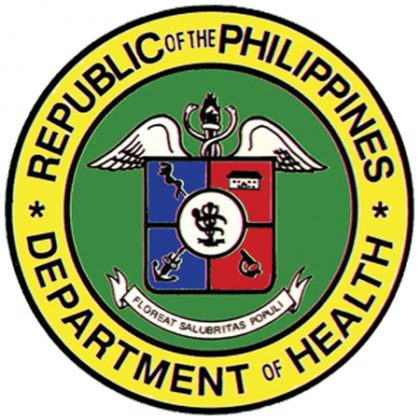Philippine health authorities reported 1,894 coronavirus cases on Friday, bringing the total number of COVID-19 cases since the pandemic started to 2.8 million.
This as the country is struggling to obtain syringes used in administering mRNA vaccines such as those developed by Pfizer, Inc. and Moderna, Inc. due to “apparent global shortage.”
The total death toll rose to 45,035 after 170 more patients died, while recoveries increased by 1,421 to 2,738,975, the Department of Health (DoH) said in a bulletin.
The agency said there were 29,105 active cases, 63% of which were mild, 16.70% were moderate, 10.2% were severe, 6.7% were asymptomatic, and 4.4% were critical.
It said 39% of intensive care units in the Philippines were occupied, while the rate for Metro Manila was 35%.
The health department said 27 duplicates were removed from the tally, 23 of which were tagged as recoveries and one of which was reclassified as a death. It added that 145 recoveries were reclassified as deaths.
Two laboratories failed to submit data on Nov. 10.
The Philippine immigration bureau recently banned its workers assigned at international airports from going on leave during the holiday season as it anticipates an increase in passenger traffic.
SYRINGE SHORTAGE
Also on Friday, Health Undersecretary Maria Rosario S. Vergeire said that the country is struggling to obtain syringes used in administering mRNA vaccines such as those developed by Pfizer, Inc. and Moderna, Inc. due to “apparent global shortage.”
“Until now, there have been some delays and this is because of the apparent global shortage,” she said at a virtual news briefing.
She said the Philippines had already procured at least 44 million syringes early this year through the United Nations Children’s Fund for the country’s coronavirus vaccination program.
“We have anticipated this kind of shortage as early as May to June this year,” she said. “So, early part of this year, we placed our orders and our procurement process through the UNICEF.”
As of Nov. 10, 66.8 million coronavirus vaccine doses had been administered. Nearly 30.5 million people, or 39.51% of adult Filipinos, have been fully vaccinated against the coronavirus.
In the National Capital Region, 91.10% or 8.9 million of the 9.8-million residents, have been fully inoculated.
GREEN LIST
Also on Friday, the presidential palace said an inter-agency task force has updated the country’s “green list” for travel.
Countries included in the so-called green list are considered to be at low-risk for the coronavirus. Their fully vaccinated travelers can enter the Philippines without the need to undergo facility-based quarantine.
China — where the first case of the coronavirus was reported in late 2019 — and 44 other countries and jurisdictions are in the updated green list for travel.
This as China is again battling a coronavirus outbreak linked to domestic travel in the past month, the South China Morning post reported. Parts of China have already tightened mobility restrictions due to the latest outbreak, with Beijing, the capital, enforcing lockdowns in several residential compounds.
Meanwhile, American Samoa, Bhutan, Chad, the Comoros, Cote d’Ivoire (Ivory Coast), the Falkland Islands (Malvinas), the Federated States of Micronesia, Guinea, Guinea-Bissau, Hong Kong, India, Indonesia, and Japan were also placed on the green list.
Also included in the list of low-risk countries are Kosovo, Kuwait, Kyrgyzstan, Malawi, Mali, the Marshall Islands, Montserrat, Morocco, Namibia, Niger, Northern Mariana Islands, Oman, Pakistan, Palau, Paraguay, Rwanda, Saint Barthelemy, Saint Pierre and Miquelon, and Saudi Arabia.
Senegal, Sierra Leone, Sint Eustatius, South Africa, Sudan, Taiwan, Togo, Uganda, the United Arab Emirates, Zambia, and Zimbabwe are also in the green list.
The Faroe Islands and The Netherlands are the only areas that are currently in the red list. All other countries and jurisdictions not mentioned in the yellow list.
Travelers from yellow-listed countries are required to undergo facility-based quarantine until the release of a negative swab test that was taken on the fifth day from their arrival. They must quarantine at home until their 10th day.
Those who are unvaccinated or partially vaccinated and individuals whose vaccination status cannot be independently verified by Philippine authorities as valid and authentic shall go through facility-based quarantine and take a swab test on the seventh day from their arrival. Despite getting a negative result, they are required to continue home isolation until their 14th day. — Kyle Aristophere Atienza

